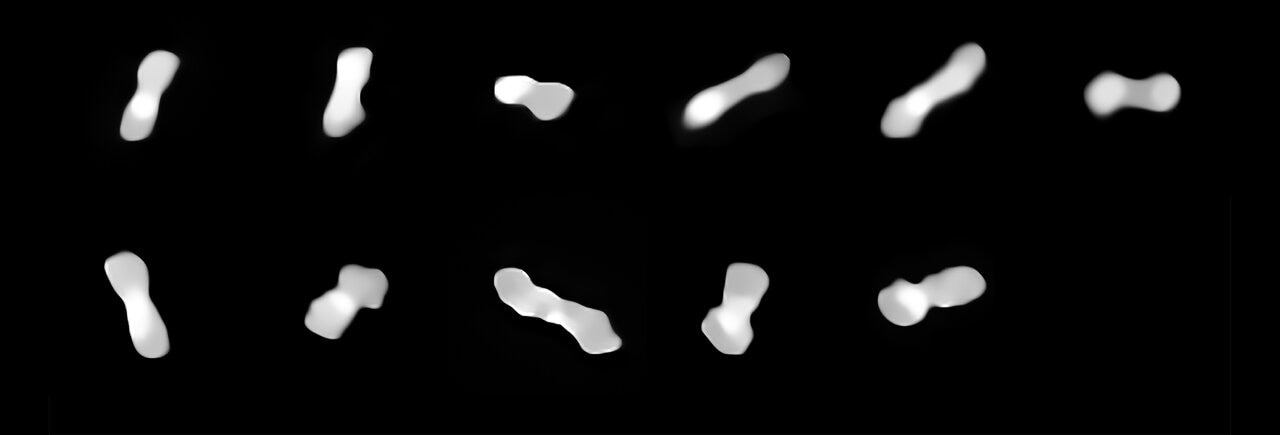A Dog Bone-Shaped Asteroid Named Kleopatra And Butterflies Feeding On Live Caterpillars | Science News
New study finds milkweed butterflies harassing, subduing & feeding on live caterpillars from other milkweed families. ABP Live brings you more such interesting science news reported over the past week

New Delhi: Butterflies are beautiful creatures loved by all. But could you imagine a butterfly feeding on members of their own subfamily? For the first time, butterflies have been found to exhibit such behaviour, according to a new study.
Also, strange images of a dog-bone asteroid have been captured by the European Southern Observatory. ABP Live brings you more such interesting science news reported over the past week.
Why These Butterflies Feed On Live Caterpillars
A new study conducted by researchers from the University of Sydney, published in the Ecology journal, has made an astonishing discovery of milkweed butterflies harassing, subduing, and feeding on live caterpillars belonging to other milkweed families. The researchers explain that the butterflies could be doing so to increase their supply of mating pheromones (hormones).
Insect evolutionary theory is brought into question due to such behaviour exhibited by a butterfly towards members of its own subfamily, Danainae, the study states. Butterflies are thought of as gentle animals, and this behaviour indeed comes as a shock.
Caterpillars, which are the larval stage of butterflies and moths, obtain chemicals for self defense by feeding on toxic plants. Such chemicals help male butterflies produce mating pheromones, the study explains.
Though such chemicals could be obtained from plants, the butterflies in the forests of North Sulawesi, Indonesia, have developed a taste for caterpillars, to increase supplies of their love drug, the study mentions. The lead author of the study, Yi-Kai (Kai) Tea, says that their team has termed this behaviour as, 'kleptopharmacophagy-chemical theft for consumption', according to a statement by the University of Sydney.
Can dying stars appear younger?
Observations made by the NASA/ESA Hubble Space Telescope suggest that white dwarfs can appear more youthful than they actually are, in the final stages of their lives, by continuing to burn hydrogen.
White dwarfs are usually viewed as inert, slowly cooling stars, but this evidence has challenged the view.
During the last stages of their lives, white dwarfs cast off their outer layers, and about 95 per cent of all stars in the universe will end up as white dwarfs, including our Sun. A team of researchers from various universities compared cooling white dwarfs in two massive collections of stars, namely, the globular clusters M3 and M13. They observed around 700 white dwarfs in M3 and M13 using Hubble's Wide Field Camera 3, at near-ultraviolet wavelengths, and found a striking difference between the two clusters.
The white dwarfs in M3 were observed to be simply cooling stellar cores, while 70 per cent of the white dwarfs of M13 were found to be burning an outer envelope of hydrogen on their surfaces, slowing down their cooling rate and allowing them to burn for longer durations. The burning makes these white dwarfs appear younger in the last stage of their lives, the researchers explain. They also mention that this discovery could have consequences on the measurement of the ages of the Milky Way Galaxy's stars.
Black Holes exert pressure on their environment: Study
For the first time, it has been found that black holes exert a pressure on their environment. The study was conducted by physicists from the University of Sussex, and published in the Physical Review D journal.
Stephen Hawking had discovered in 1974 that black holes emit thermal radiation, and the researchers' discovery shows that black holes are much more complex thermodynamic systems, with temperature as well as pressure.
The researchers explain that while studying the entropy of a black hole, they found that a pressure could occur in black holes due to quantum gravity. Xavier Calmet, one of the researchers of the study, said their exciting finding about Scwarzschild black holes having a pressure and temperature opens up possibilities in the study of astrophysics, particle physics and quantum physics, according to a statement by the University of Sussex. Folkert Kuipers, another researcher involved in the study, said that this exhilarating discovery shines a new light on the quantum nature of black holes.
Images of 'dog-bone' asteroid captured by ESO
The sharpest and most detailed images yet of the asteroid Kleopatra have been obtained by a team of astronomers using the European Southern Observatory's Very Large Telescope. They found that the three-dimensional shape of this asteroid resembles a dog bone, with a higher accuracy than before. The formation of the asteroid and that of the two moons orbiting it can be understood with this research, published in the Astronomy and Astrophysics journal.
Franck Marchis, one of the researchers, said that Kleopatra is a multiple asteroid system, understanding which can help astronomers learn more about the Solar System, according to a statement by ESO.

Ever since Kleopatra was observed 20 years ago using radar technology, it was found to have two lobes connected by a thick neck, and was named a dog-bone asteroid. It is a part of the Asteroid Belt between Mars and Jupiter.
In 2008, Marchis and his colleagues found it to be orbited by two moons. They named the moons, AlexHelios and CleoSelene, after the Egyptian Queen Cleopatra's children. They later on found the length of the asteroid to be about 270 kilometres, and one of the lobes to be larger than the other.
A second study published in the same journal, conducted by Miroslav Brož and his team of researchers, explains that the moons' orbits were different from what was previously found. The observations and modeling made in this study helped the astronomers determine the influence of gravity on the moons' movements, and their complex orbits. The study also found the asteroid's mass to be 35% lower than previous estimates.
Related Video
Southern Rising Summit 2024: How Important is Self-Awareness? Insights from Anu Aacharya | ABP LIVE





































